There are plenty of options for adventure here, and the majority of the backcountry activities in Everglades National Park are without a doubt, for those who seek something different.
Here are some of Park Junkie’s favorite activities in the Everglades.

Guide to Everglades
Everglades Backcountry Permit
All overnight trips in Everglades National Park require a backcountry permit. Operation of motorized vessels in the park now requires the completion of a boater safety course.
moreBackcountry permits can be obtained at either the Flamingo or the Gulf Coast Visitor Centers. The Earnest F. Coe and Shark Valley Visitor Centers do not issue such permits.
Permits can be acquired no earlier than the day prior to departure and no reservations are accepted. Backcountry campsites are assigned at the time of permit registration.
All powerboat activities in the park now require the completion of a boater safety course and the possession of an onboard certificate verifying such completion.
Operation of manually powered watercraft such as canoe or kayak do not need this certificate unless the craft is operated by an electric motor. The certificate is free to obtain and the course will take approximately one hour to complete.
Day trips into the park do not require a permit. See the park service backcountry page for more information regarding specific activities.
Canoe and Kayak Rentals
Traveling without your boat? Not a problem. There are a few rental shops that can suit you up for success and get you on the water. Shops can be found in Everglades City, Homestead and Flamingo. See the links below for a shop in your area of interest.
morePaddling in Everglades
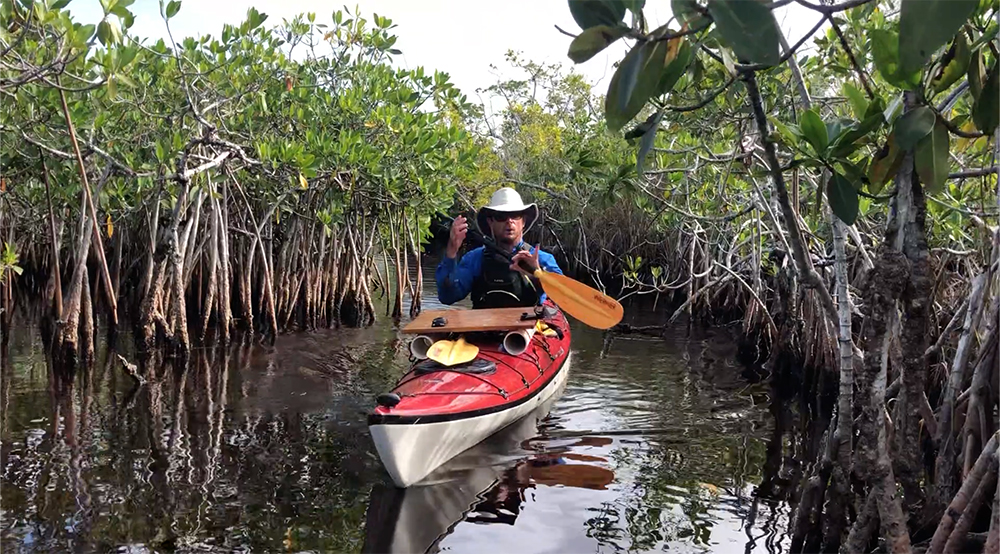
A trip to the Everglades can never be complete without a journey on the water. This park is essentially covered by slow flowing H20 and there is simply no other way to access much of the hidden magic. If you really want to get into the mix in the Glades, try a paddle camping trip, which involves spending the night on one of the park’s backcountry chickees.
moreThere are numerous options available, but the classic canoe is probably a good bet for a fantastic time. A kayak can give the same access, and for some, will be a bit more maneuverable. Just make sure you have a breakable paddle (breaks down into two sections) when negotiating the tight confines of some of the park’s mangrove tunnels in a kayak.
Nearly all boating adventures in the park begin in either the Gulf Coast region or at the southern outpost of Flamingo. Both of these locations allow access to the endless mangrove forests of southern Florida’s western shore. The truly adventurous will set out on a 99-mile journey to paddle from one location to the other. We’ll discuss that below.
Many however will simply wish to get their feet wet with a short paddle into the unknown, which is a great introduction to the park. Numerous opportunities exist for these folk.
Paddling in Flamingo
Flamingo offers an array of options for canoe or kayak trips. The first decision is whether to head out onto the open waters of the Florida Bay, or to journey into the mangrove wilderness of the park’s interior, otherwise known as the backcountry.
Paddling the Florida Bay
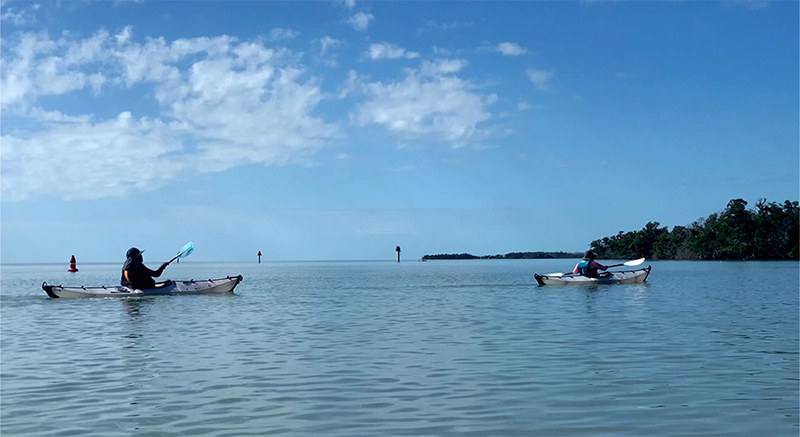
Front country options place boaters on the open water of the Florida Bay, which is heavily affected by tides that advance and retreat twice per day. Tides are a big deal here, as low tide on this body of water often removes all water and leaves vast tracts of mud that can strand unaware boaters.
moreBefore heading out onto the bay, it is essential to read and understand that day’s tide chart, and a navigation chart is wise to have too. There are channels throughout the bay that retain passable waters during low tide, but boaters must be aware of the tide table and the location of these channels. A night spent stranded on a mudflat is rarely described as an enjoyable event.
You’ll also want to take a look at the weather forecast prior to jumping into your craft. Windy days on the bay are a recipe for a miserable time. There is no cover at all from a strong or even steady breeze out there. Such days are prime time for a trip into the more sheltered waters of the backcountry.
Trips onto the bay often provide sightings of numerous species of birds, in addition to occasional views of saltwater crocodiles, manatees and even dolphin pods, who regularly cruise the shallow waters of the bay in search of easy meals.
There are numerous options for day trips here, including paddles to Snake Bight, a bay just to the east of Flamingo that harbors great numbers of birds, especially during migratory seasons. To the west, motivated paddlers can access the open beaches of Clubhouse Beach and East Cape Sable, both of which feature white sands that normally lie deserted. A simple paddle around some of the mangrove-covered keys of the immediate Flamingo area just to observe the birds can be rewarding as well.
Day trips in this area can feel limiting however, and many choose to return in favor of an overnight journey to camp under the stars at one of the many beach sites or on chickees, which are elevated wooden platforms built to accommodate boat campers.
Paddling the Backcountry

The other option is to steer your vessel into the mangrove forests of the Everglades backcountry and make your way into one of the numerous water trails that lead through the thicker confines of the park.
moreOptions begin right in Flamingo, with waterways leading north to through the Buttonwood Canal into Coot Bay, and just beyond, Whitewater Bay. Travel is fairly straightforward and simple if paddlers stay on the main course along the Buttonwood Canal, as this waterway is wide and heavily traveled.
To the eastern edge of this large body of water lies the intricate passages of Hell’s Bay and just to the north, Lane Bay and Roberts River, which are more commonly accessed by the Hell’s Bay Canoe Trail.
The distance one can travel into the backcountry in a day’s paddle depends solely on the ability of the paddler. Be aware of your limits. It is a massive park and you can quickly find yourself far away from any form of civilization.
The backcountry of the Everglades is a true labyrinth and is as complicated a maze as one can imagine. One mangrove lined passage is rarely distinguishable from the next. It is prudent to maintain constant awareness of your location and regularly plot your progress on a map or gps. Hell’s Bay was named such because it is “hell to get into, and hell to get out of…”. So play it safe, you’ll be happy you did.
Paddling in the Flamingo backcountry is rewarding as there are often numerous encounters with alligators, manatee, birds and even dolphin. The terrain here is classic Everglades and this is true wilderness.
While there are intricate waterways that can found during paddles from Flamingo, it will take some time to get into the really thick passages of Hell’s Bay. These areas can be more easily approached from other interior routes that begin along the park’s main road.
Paddling Interior Routes
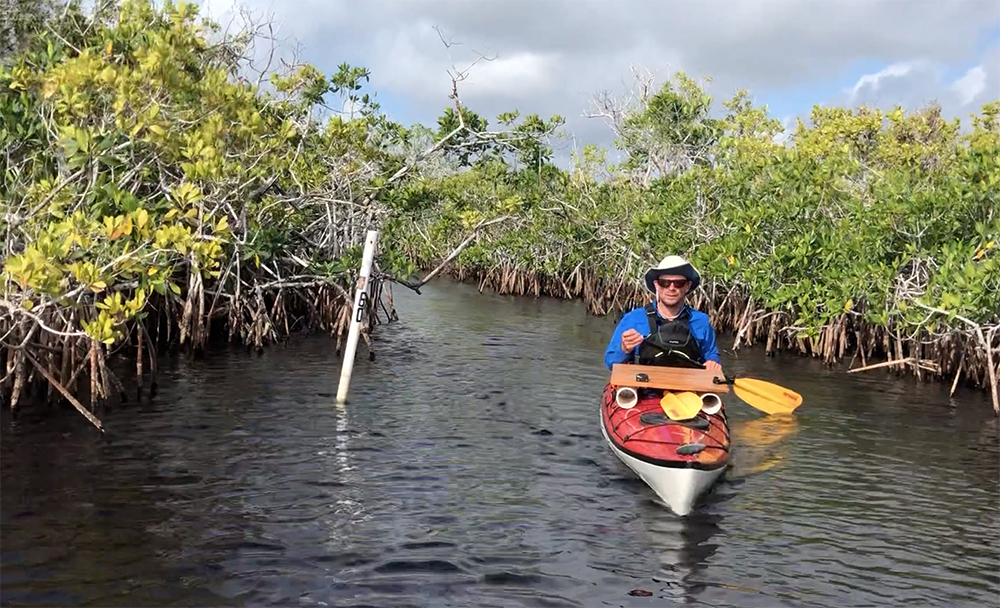
Numerous options exist for paddlers that have a vehicle and a boat. The West Lake Trail, the Noble Hammock Trail, Nine Mile Pond and the Hell’s Bay Canoe Trail are excellent options for those who want to launch their boat into the interior of the park right from the road. Be sure to check water levels at the visitor center prior to embarking on one of these routes as water levels fall during the dry winter season.
moreThe terrain in these areas is that of extremely thick subtropical vegetation and successful navigation here would be highly complicated without numbered pvc markers installed by the park service. Although sometimes difficult to see from a distance, these markers are a Godsend to paddlers who do not wish to spend a few lonely days in the bowels of the Everglades.
It should be noted that some of these trails pass through tight “mangrove tunnels” that are often so narrow that paddlers must pull themselves along by the limbs of the trees, because there is simply no room to move a paddle.
Yep, some of us subconsciously enjoy the ridiculousness of fighting our way through more complicated terrain. For such unfortunate souls, the Everglades holds a number of trails that are just what the doctor ordered.
Noble Hammock – The Noble Hammock Loop is one of the tighter options, and can be downright frustrating to those not cozy with paddling in tight spaces that are lined with spider webs… and big spiders… The route is short though, and can be a fun romp with the right attitude. Park Junkie uttered a spew of explicit words throughout his journey here and was eager to finish this one…
Nine Mile Pond – Nine Mile Pond is a regularly traveled 5-mile route that was meant to be paddled in a counter-clockwise manner, although it can be reversed. There is a shortcut option around the halfway point, at marker #44. This option can be used if the water level is too low to allow comfortable paddling.
Hells Bay – The Hell’s Bay Trail is one of the classic canoe trails in all of the national parks. There are a limitless number of options available to a wandering paddler on the way to Hell’s Bay.
This route was named by seasoned veterans of the early days in the Everglades. They reported that it was “hell to get into, and hell to get out of…”. Hence the name: Hell’s Bay. Anyone who paddles this route can sympathize with the struggle of these early explorers and the placement of the pvc markers is one for which all wise paddlers here are thankful.
This trail is marked by 175 markers that lead to the Hell’s Bay Chickee. The first 130 of these are found in a winding maze that would confound the wisest of route finding experts. The trail winds through thick mangrove forests and often requires a limber pose as one dodges limbs, leaves and webs while traversing this waterway.
West Lake – Another option is the West Lake Canoe Trail, which can theoretically be extended to exit into the Florida Bay at Alligator Creek. The lake is one of the largest in the park and paddling its length is mostly on open water, which can become choppy on windy days.
The option of paddling through to Alligator Creek is attractive, but during a 2020 visit, backcountry rangers recommended against it strongly due to the fact that no post-hurricane cleanup had yet occurred since the hurricanes of 2017. So Park Junkie & crew chose Hell’s Bay instead.
Nevertheless, this option is on the list, as it would be a convenient way to combine a backcountry trip with a front country experience as well. The length of such an excursion would be about 8 miles and would run through about two miles of mangrove tunnels before exiting into the Florida Bay.
Paddling the Gulf Coast
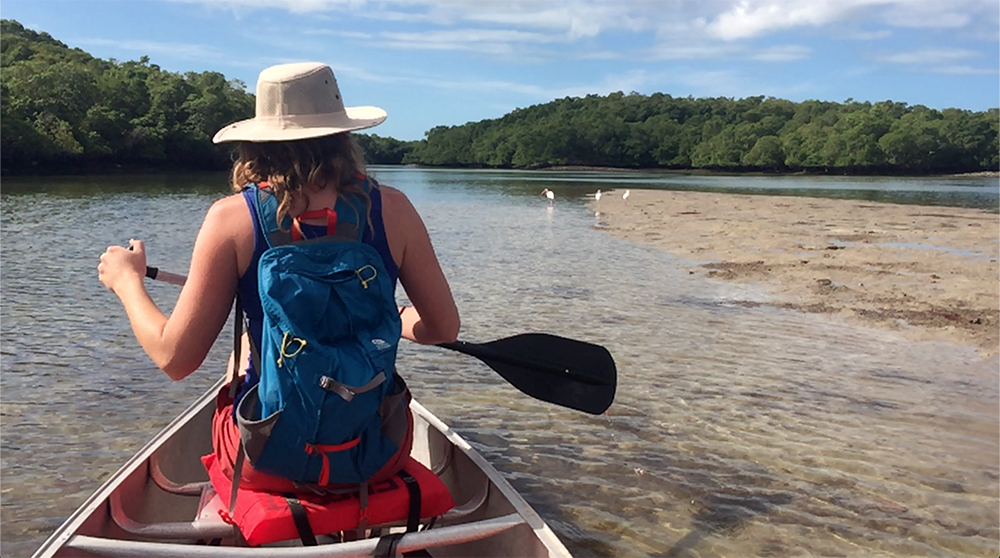
The Gulf Coast is another area that offers endless opportunity for the paddling adventurer. The Ten Thousand Islands lie just to the west of the Gulf Coast Visitor Center and provide a labyrinth of endless mangrove tunnels and mudflats, while inland options such as the Turner River gives the paddler an inland option.
moreTurner River – There are limitless routes available from here, but the common move is to run the Turner River, which is known for its scenic diversity. The route has become a popular destination for paddlers, but an early start will guarantee an abundance of wildlife and a bit of solitude to keep you blissful while you paddle along.
Most paddlers drop in at a canoe launch on Hwy 41 in Big Cypress National Preserve, which lies just to the north of the Everglades and protects nearly 750,000 acres of southern Florida wilderness. The other option is to launch into the river’s mouth from Chokoloskee, which is a small town just south of Everglades City. You can park at the bridge and launch from there.
A one-way paddle from one place to another will be 8.5 miles, and another 2.5 miles will put you at the docks of the Gulf Coast Visitor Center, while sits to the northwest of Chokoloskee. Of course, this option means that you’ll need a shuttle back to your vehicle, or an attractive thumb. Or, just turn around and paddle the 8.5 or 11 miles back to your cozy rig. The Ivy House in Everglades City offers shuttles, contact them for info.
There are no navigational markers, but the route is fairly straightforward. Wildlife is everywhere along the Turner River. Alligators can be seen sunning themselves on the open banks, while herons and egrets stand waiting for their prey to drop their guard for an instant.
The river presents a variety of scenes, from open river, to mangrove tunnels so tight that you’ll be pulling yourself through by the limbs of the trees, which wrap around you like the arms of a green tropical monster. While the trees pose no harm, be wary, snakes can be resting on these limbs. You’ll know if you grab one.
Halfway Creek – Halfway Creek is a paddling option that can be done in a couple of different ways. The route begins at the Big Cypress National Preserve Welcome Center on the Tamiami Trail (Fl Hwy. 41) and runs for 7.5 miles to the Gulf Coast Visitor Center in Everglades National Park. A roundtrip paddle is 15 miles. To paddle the route one-way requires a shuttle, or a hitchhiking journey back to the trailhead.
Another option is to paddle the Halfway Creek Loop Trail, which ends up being about 9 miles. The route is affected by tides, but the loop route is far enough inland that it remains floatable even during low tide.
For a complete description of this route, check out the NPPlan website.
Ten Thousand Islands – No discussion of paddling on the Gulf Coast would be complete without a brief mention of the opportunities available in the Ten Thousand Islands. You’ll want to keep an eye on the tide chart, and keep your bearings as you paddle around the islands, as they tend to look very similar, and there are ten thousand of them after all.
You can toss your boat in the water at the Gulf Coast Visitor Center, or even rent one there if you didn’t bring one. From there, it’s a quick paddle into some really cool, secluded areas. The fishing is excellent, so bring your pole and your license and have at it. The bird viewing opportunities in the islands are stellar as well. Many of them are looking for the same fish you are.
Everglades Backcountry Camping
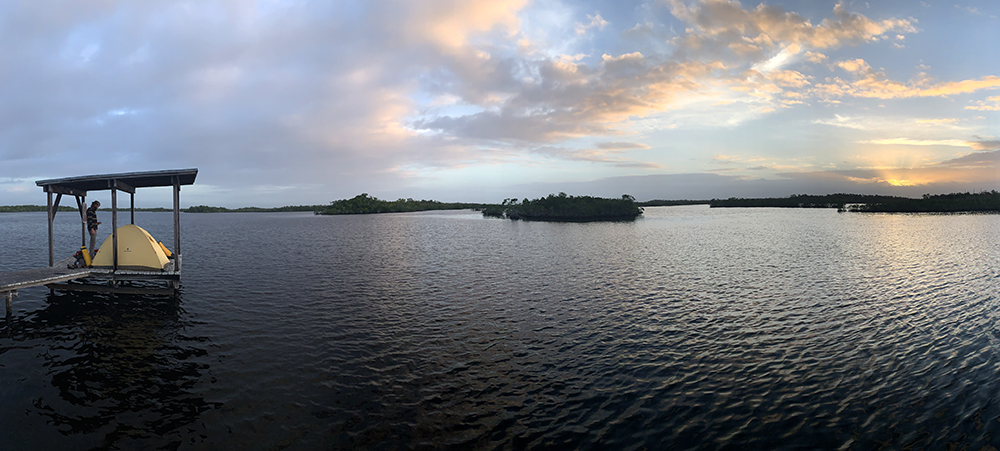
There’s something special about spending the night in a place where you know it is totally illogical for you to stay. Waking up in such a location gives a certain satisfaction that is hard to realize through other pursuits. The backcountry of the Everglades is one of those places. Let’s just say you know you’re not in your back yard, that’s for sure.
moreCamping in the Everglades backcountry is not that difficult in practice. You just grab a permit, jump in your boat, make sure you have your bug spray, and paddle on out to one of these confounded “chickee” things. Once you get there, you set up camp a foot or two above the surrounding alligator infested waters, and make yourself at home.
You’ll likely find that life is pretty good on the chickee. Where else can you catch fish from your living room?
Now there are numerous campsites in the Everglades backcountry that utilize ground camping, but the chickees are my fave. See the NPS site for info on spending a few of your future nights out there.
Everglades Boat Tours
Many who visit this unique park choose to embark on one of the various interpretive boat tours offered by the park concessioners. These trips often provide an up-close view of otherwise hard-to-find wildlife while tour guides tell tales of the Glades.
moreFlamingo Boat Tours
Guests who make their way to the most remote region of the Everglades can opt to witness the backcountry of this unique park on a guided boat tour.
There are tours that provide a interpretive view of both the park’s backcountry, with its mangrove forests and brackish water bays, or the front country of the Florida Bay and its mud flats and impressive bird population.
For more information or to book a tour in Flamingo, see the link below.
Gulf Coast Boat Tours
Tours of the Ten Thousand Islands are offered out of the Gulf Coast location in Everglades City.
Hiking in the Everglades
Everglades National Park is not known as an epic hiking destination. Nevertheless, there are a number of short trails here that will provide a sufficient introduction to this lush subtropical environment.
Pinelands Trails
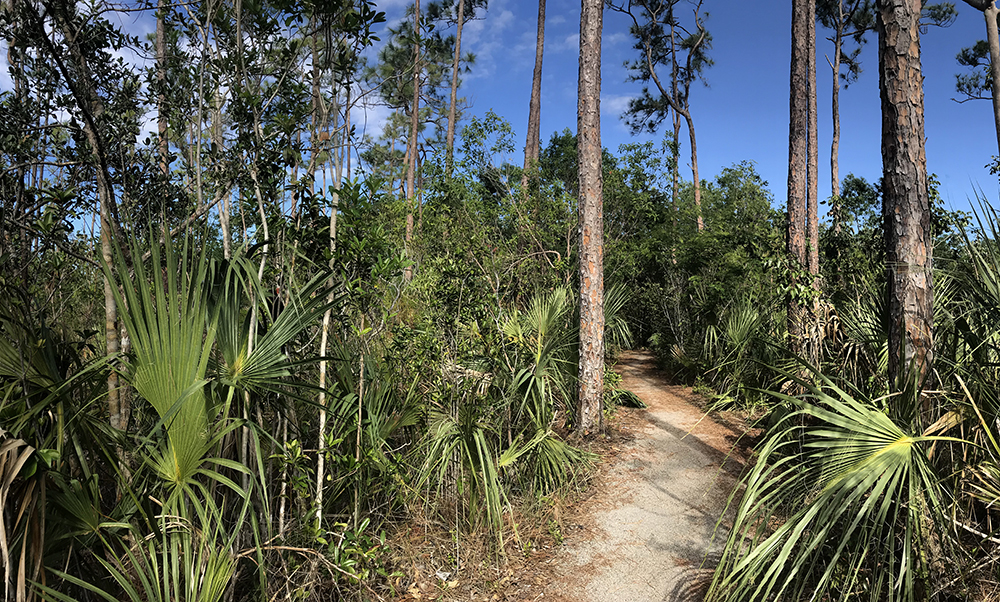
The landscape of the Pinelands differs from much of the park. Trails here lead through a higher elevation than those at Flamingo, and even though it may only be a mere 3 feet of difference, it is significant in the Everglades.
moreThe Pinelands are rarely flooded, and the soils can sustain tall pines, and dense stands of broad-leaved shrubs, while the surrounding prairies are bathed in the brackish waters of south Florida.
Long Pine Nature Trail Network – This is the most extensive of the trails in the park, and luckily, this section of the Everglades is quite enchanting. More than 20 miles of trail combine an old system of roads with the Old Ingraham Highway. These form a network that leads through the Pinelands, beginning at the Long Pine Key Campground and ending at Pine Glades Lake, with a few options for turnoff along the way.
Pinelands Trail – A half-mile paved trail through tall pines, palmettos and wildflowers. Thick vegetation along the trail offers a fun environment for a night hike.
Royal Palm Trails
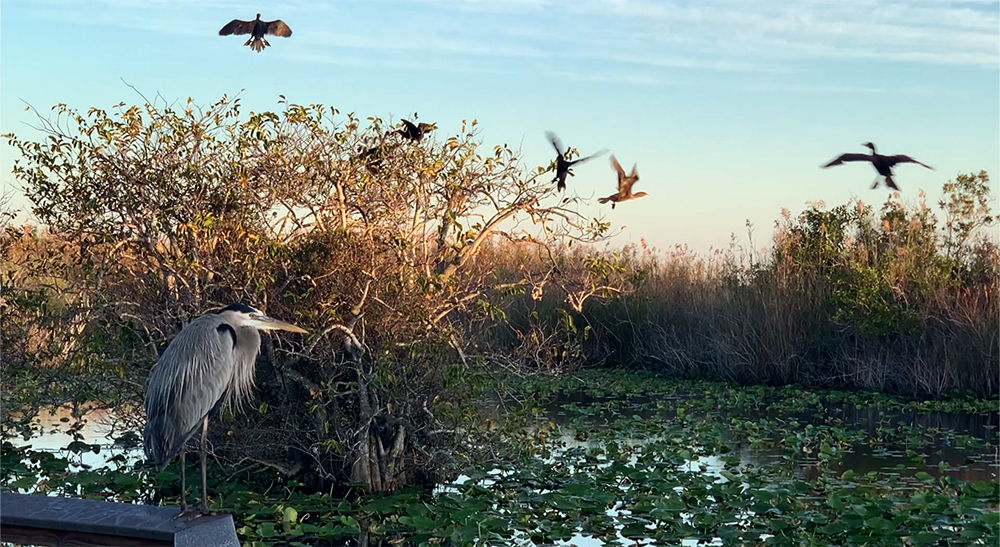
The short hikes at Royal Palm offer easy access to the classic Everglades scenery. Endless sawgrass prairies stretch to the north, while the thick subtropical forest encompasses the terrain to the south. This is a great spot for birding, and for wildlife observation.
moreAnhinga Trail – This short boardwalk is found at Royal Palm, four miles inside the park entrance. It is perfect at sunrise and sunset, and surprisingly late at night, when a flashlight can illuminate the eyes of alligators who are lying in wait for an easy meal. This is a wheelchair accessible trail and is an easy stroll. It is also a fun place to look for alligators after dark.
Gumbo Limbo – An easy self-guided half mile trail that leads through an otherworldly labyrinth of strange gumbo limbo and royal palm trees, along with air plants and ferns. Fun night hike!
Trails on the Road to Flamingo
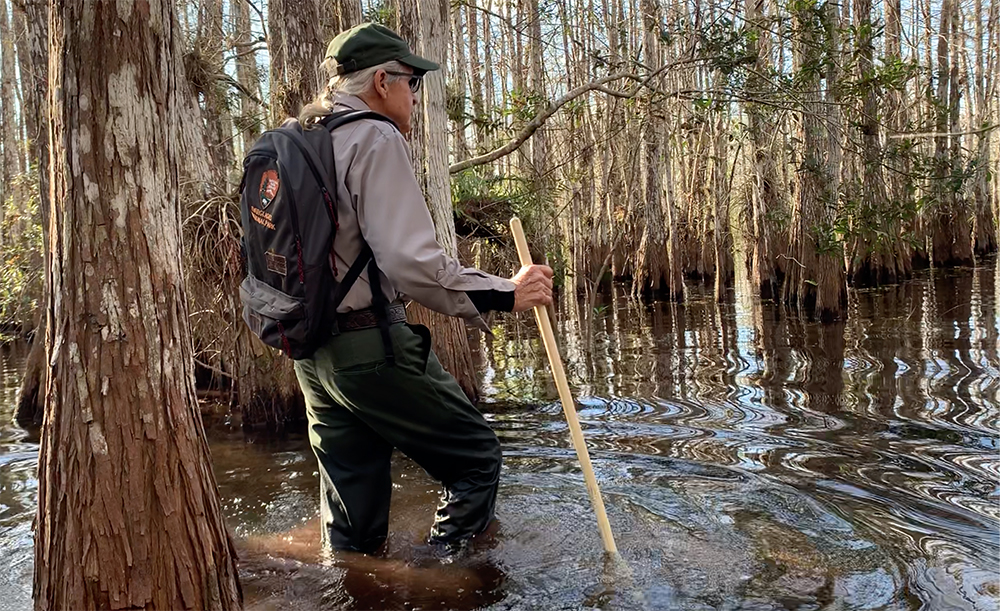
As you may have noticed by now, most of the trails offered in the Everglades are short, and cannot accurately be described as “hiking” trails. More like “stretching the legs”. Nevertheless, they do offer an opportunity to observe this unique environment and to obtain an easy introduction to the Glades. There are a couple of similarly short trails that are worth a stop on your drive to Flamingo.
morePahayokee – An easy boardwalk with an elevated deck that offers views of the inland Everglades. Usually a quiet stop, and a nice place to watch the stars.
Mahogany Hammock – A self-guiding half mile boardwalk which leads through a dense subtropical forest, which is known here as a “hammock”. Stroll through a thickly vegetated environment which includes the largest living mahogany tree in the United States.
Trails in Flamingo

This location cannot be described as a hiker’s paradise either, but there are a few trails here that will provide an opportunity to hit your stride for a few miles. The thick vegetation of the park continues, but in the form of mangrove forests, mixed with prairies and hardwood hammocks here at the road’s end.
moreSnake Bight – The Snake Bight Trail is just over three miles roundtrip. It runs parallel to an old canal through an old tropical hardwood forest, which contains dozens of species of trees. The trail provides access to the Florida Bay at an inlet known as Snake Bight. A “bight” is a bay that lies within a larger bay.
The Park Service has suspended trail maintenance on the Snake Bight Trail, in order to protect the Cape Sable thoroughwort. Nevertheless, a sufficient number of hikers & bikers seem to be keeping the trail alive.
Coastal Prairie Trail – This is another old road that was once used by fishermen cotton farmers. It leads through a coastal hammock of buttonwoods separated by open prairies. The 7.5 mile (one-way) trail runs to Clubhouse Beach, which offers a nice camping option. Permit required for overnight stay.
The Park Service has suspended trail maintenance on the Coastal Prairie Trail, in order to protect the Cape Sable thoroughwort. This trail can be a navigational nightmare thanks to the suspension in maintenance and apparent lack of travel.
Biking in the Everglades
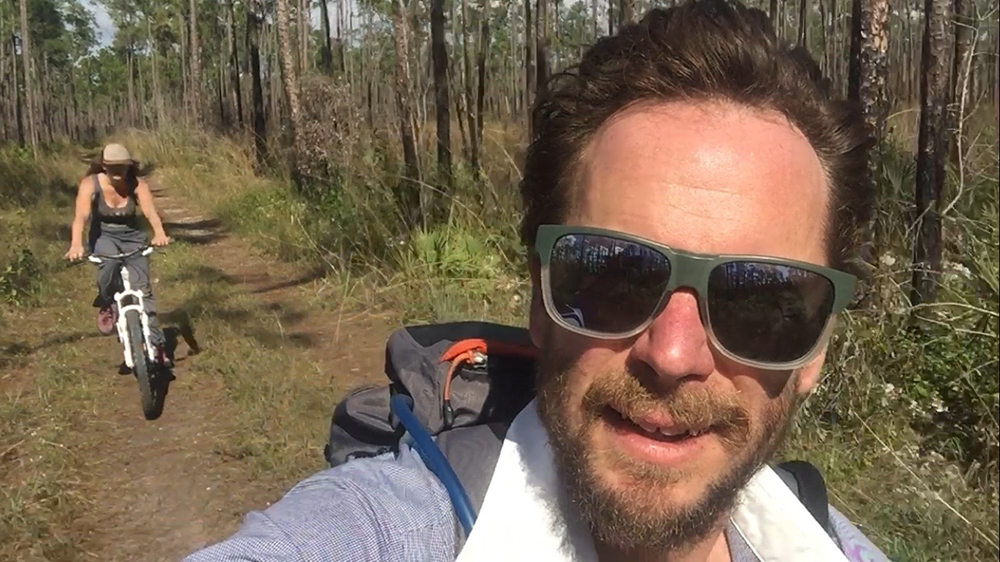
A great way to cover some ground in the Everglades is to hop on the bicycle and pedal your way along one of the 5 trails that allow such activity. The bike can provide a quick escape from those pesky mosquitoes too!
moreLong Pine Key Trail – This is the most extensive of the trails that allow bikes in the park. The 14-mile trail runs on a system of old roads that lead through the Pinelands, beginning near the Long Pine Key Campground and ending at Pine Glades Lake.
Rowdy Bend Trail – This route runs on a former road that leads into the mangroves near Flamingo. The 5-mile trail can be muddy and is often overgrown. This option can be frustrating at times due to the heavy presence of mosquitos.
Snake Bight Trail – A short 3.5-mile roundtrip trail that leads to a small dock looking out onto Snake Bight, a bay just to the east of Flamingo. This is a great place to view birds, and make sure to stop along the trail and look into the small canal just to the east of the trail. There are often a wide variety of birds, alligators and crocodiles nestled in the brushy undergrowth of this area.
Shark Valley Tram Road – Now this is biking in style. A paved path leads along a canal, which is lined with more wildlife than you’ll find in a zoo. My last ride on this trail took me past 33 alligators, 9 turtles and countless birds. The trail is 15 miles roundtrip. At the halfway point, you’ll find the Shark Valley Observation Tower, which provides a 45-foot-high observation deck that gives a stunning view of the surrounding terrain.
L-67 Canal Road – This lesser-known trail provides a quiet ride along a canal and leads into the Shark Valley Slough. The ride is replete with wildlife and the trail is a great birding ground during the winter months.
See the park website’s biking page for more information and regulations regarding e-bikes.
NPS – Biking in the Everglades
Fishing in the Everglades

The fishing here is likely some of the most exhilarating that you’ll ever experience. One third of the park is covered by water, and there are more fish in the waters of the Glades than hours in your life. So you better get to casting now, because you’re already way behind.
moreTrophy sized snook, redfish, and tarpon can hit your line at any time and a mess of mangrove snapper or largemouth bass can provide a fabulous dinner for the homies back at camp.
Make sure to have a valid fresh or saltwater Florida fishing license and check the park website’s fishing page to determine seasonal regulations regarding your trip.
For those interested in a guided fishing trip into the park, there are numerous options. A quick internet search will provide a list of authorized guides.
Here is a guide in Everglades City to start you out.
Guide to Everglades
Relevant Links
National Park Guides

All content found on Park Junkie is meant solely for entertainment purposes and is the copyrighted property of Park Junkie Productions. Unauthorized reproduction is prohibited without the express written consent of Park Junkie Productions.
YOU CAN DIE. Activities pursued within National Park boundaries hold inherent dangers. You are solely responsible for your safety in the outdoors. Park Junkie accepts no responsibility for actions that result in inconveniences, injury or death.
This site is not affiliated with the National Park Service, or any particular park.
